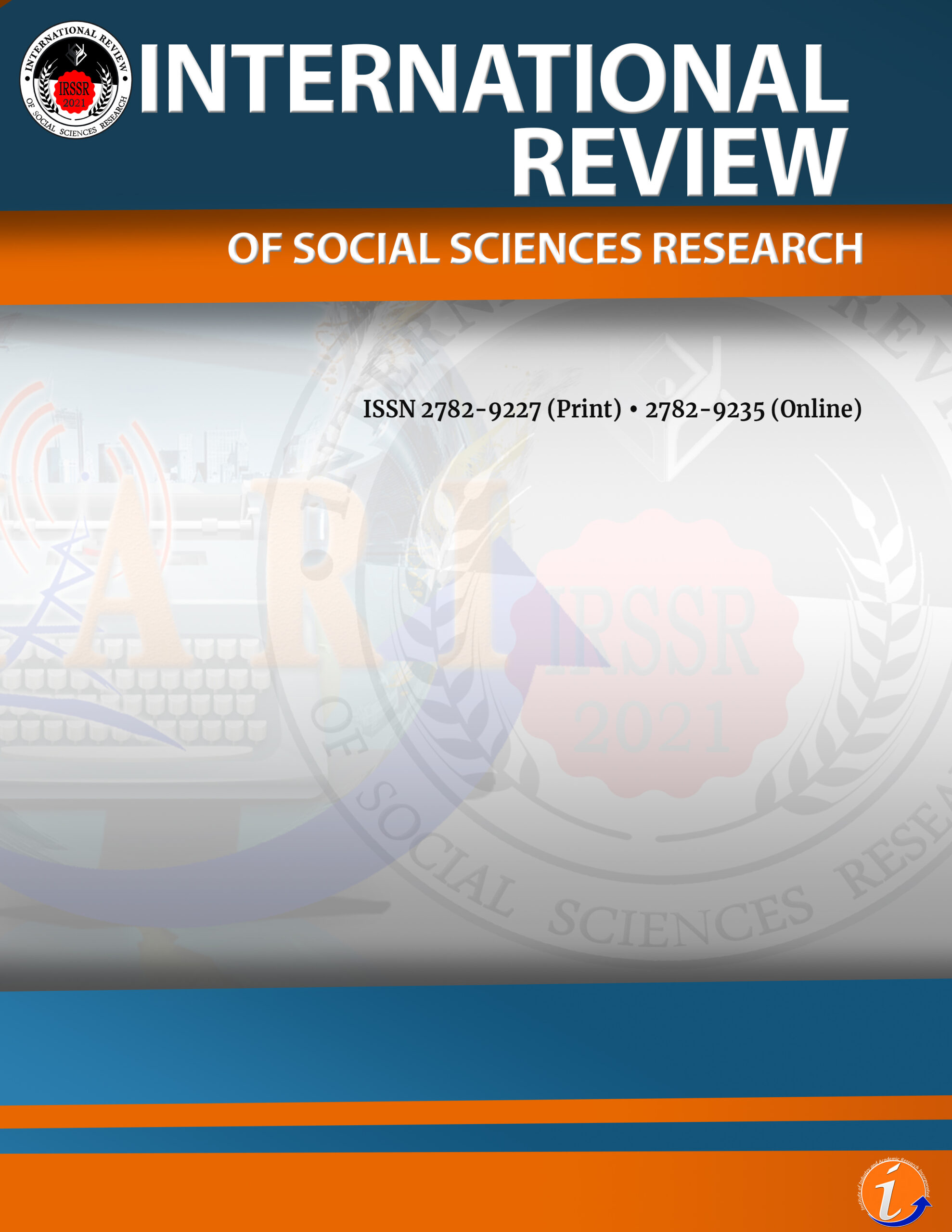This paper examines the perspectives of the Department of Employment and Labour employees and jobseekers on the usage of the Employment Services South Africa (ESSA) system. The system's primary aim is to place unemployed South Africans in available job opportunities by facilitating information sharing between employers and jobseekers based on the jobseekers’ qualifications and experience. Data was collected from 34 respondents, including employees of the Department of Employment and Labour and jobseekers, through qualitative interviews. The findings revealed that many unemployed jobseekers did not effectively use the ESSA system. While the ESSA system is valued by the Department of Employment and Labour employees, its adoption, perceived usefulness, accuracy, and effectiveness among jobseekers are lacking. The system still struggles with low visibility, a lack of awareness, and trust among jobseekers, who often look elsewhere for effective recruitment.
employment services South Africa, job seeker, public employment services, Department of Employment and Labour
Akhonamaqwabe Gumede. Corresponding author. Masters in Public Administration student at the School of Public Management and Administration, University of Pretoria. His research interest focuses on labour studies. Email: u21773689@tuks.co.za
Stellah Lubinga. Senior Lecturer at the University of Pretoria’s School of Public Management and Administration (SPMA). Her research focus is on digital governance and service delivery. Email: stellah.lubinga@up.ac.za
Tyanai Masiya. Professor at the University of Pretoria’s School of Public Management and Administration (SPMA). His research focus is on public service delivery, citizenship and democracy as well as local government management. Email: tyanai.masiya@up.ac.za
Michel Tshiyoyo. Professor at the University of Pretoria’s School of Public Management and Administration (SPMA). His research focus is on Leadership and Governance, Management Techniques, Organisational Studies, Public Financial Management. Email: michel.tshiyoyo@up.ac.za
“All authors equally contributed to the conception, design, preparation, data gathering and analysis, and writing of the manuscript. All authors read and approved the final manuscript.”
No potential conflict of interest was reported by the author(s).
This work was not supported by any funding.
Adedoyin, O. B. (2020). Qualitative research methods. In J. Marray (Ed.), Principles of social psychiatry (pp. 77–87). Kings College.
Agneni, L., Carta, F., Micheletta, C., & Tersigni, V. (2021). Qualitative profiling in practice: The Italian public employment services experience. International Journal of Business, Human and Social Sciences, 15(1), 109–117.
Avila, Z., & Javier, O. R. (2021). Public employment services diagnostic tool and guide. International Labour Organisation. https://www.ilo.org/publications/public-employment-services-diagnostic-tool-and-guide
Baños, J. F., Rodriguez-Alvarez, A., & Suarez-Cano, P. (2019). The efficiency of public employment services: A matching frontiers approach. Applied Economic Analysis, 27(81), 169–183. https://doi.org/10.1108/AEA-05-2019-0027
Benjamin, P., & Cawe, A. (2021). Meeting the NDP’s labour market objectives: A critical review. National Planning Commission. https://www.nationalplanningcommission.org.za/
Campbell, S., Greenwood, M., Prior, S., Shearer, T., Walkem, K., Young, S., Bywaters, D., & Walker, K. (2020). Purposive sampling: complex or simple? Research case examples. Journal of Research in Nursing, 25(8), 652–661. https://doi.org/10.1177/1744987120927206
Cedefop. (2020a). Inventory of lifelong guidance systems and practices – Germany (CareersNet national records). European Centre for the Development of Vocational Training. https://www.cedefop.europa.eu/
Cedefop. (2020b). Inventory of lifelong guidance systems and practices – France (CareersNet national records). European Centre for the Development of Vocational Training. https://www.cedefop.europa.eu/
Davis, F. D. (1989). Perceived usefulness, perceived ease of use, and user acceptance of information technology. MIS Quarterly, 13(3), 319–340. https://doi.org/10.2307/249008
Dawson, C. H., Mackrill, J. B., & Cain, R. (2017). Assessing user acceptance towards automated and conventional sink use for hand decontamination using the technology acceptance model. Ergonomics, 60(12), 1621–1633. https://doi.org/10.1080/00140139.2017.1316018
Demana, S., Molepo, J. N., & Kabelo, B. M. (2024). Assessing the role of public employment services in addressing unemployment: A South African perspective. African Journal of Development Studies, 14(1), 461–478. https://doi.org/10.31920/2634-3649/2024/v14n1a22
De Moraes, G., Gomez, T. S., & Petrelli, A. (2022). Different approaches in delivering employment services and setting private-public partnerships: The cases of Australia, Germany, and The Netherlands. World Bank. https://documents1.worldbank.org/
Department of Employment and Labour. (2021). Annual report 2020/2021. https://www.labour.gov.za/DocumentCenter/Reports/
Department of Employment and Labour. (2022a). Annual performance plan 2022/2023. https://www.labour.gov.za/DocumentCenter/Reports/
Department of Employment and Labour. (2022b). Annual report 2021/2022. https://nationalgovernment.co.za/department_annual/409/2022-department-of-employment-and-labour-(del)-annual-report.pdf
Department of Employment and Labour. (2023). Annual performance plan 2023/2024. https://www.labour.gov.za/DocumentCenter/Reports/
Department of Employment and Labour (2022). Annual Performance Plan 2022/23. https://www.labour.gov.za/DocumentCenter/Reports/
Huang, J., Ho, T., Liu, Y., & Lin, Y. (2015). A discussion on the user intention of golfers toward golf GPS navigation. Journal of Hospitality and Tourism Technology, 6(1), 26–39. https://doi.org/10.1108/JHTT-02-2015-0013
International Labour Organization (ILO). (2023). Public employment services and active labour market policies for transitions: Global report, Part I: Response to megatrends and crises. https://www.ilo.org/publications/
Johnston, H., & McGauran, A. M. (2021). Moving towards a more tailored public employment service? Administration, 69(2), 107–125. https://doi.org/10.2478/admin-2021-0016
Loewald, C., Makrelov, K., & Wörgötter, A. (2021). Addressing low labour utilisation in South Africa. South African Reserve Bank Working Paper Series WP/21/09. https://www.resbank.co.za/
Marikyan, D. & Papagiannidis, S. (2023). Unified theory of acceptance and use of technology: A review. In S. Papagiannidis (Ed), Theory Hub Book. https://open.ncl.ac.uk
Nkanata, M.G. (2019), Applying DeLone and McLean information systems success model in the evaluation of e-government initiatives: a literature review. Pretoria: Rosslyn Publishers.
OECD (2020). Public employment services in the frontline for employees, jobseekers and employers. OECD Policy Responses to Coronavirus (COVID-19). OECD Publishing, Paris, https://doi.org/10.1787/c986ff92-en
Pupuma, T. (2018), Public employment services in the Department of Labour. Unpublished Masters Dissertation. Nelson Mandela Bay: University of Nelson Mandela Bay.
Ramkumar, M., Schoenherr, T., Wagner, M.S. & Jenamani, M. (2019). Q-TAM: A quality technology acceptance model for predicting organizational buyers’ continuance intentions for e-procurement services. International Journal of Production Economics, 216: 333-348. https://doi.org/10.1016/j.ijpe.2019.06.003
Rollnik-Sadowska, E. (2020). Cooperation model of public employment services and private stakeholders: Evidence from Poland. In: Bilgin, M.H., Danis, H., and Karabulut, G. (Eds) Eurasian Economic Perspectives. Geneva: Springer, pp. 3-12.
Salmassi, A., Kazemi, M., Mehraeen, M., & Malekzadeh, G. (2022), A review of most applicable theories and models of technology acceptance. International Journal of Health Sciences, 6022-6032.
Scott, K.M., Wang, S.M., Miceli, M., Delobelle, P., Sztandar-Sztanderska, K., & Berendt, B. (2022). Algorithmic tools in public employment services: Towards a jobseeker-centric perspective. Proceedings of the 2022 ACM Conference on Fairness, Accountability, and Transparency.
South Africa (2014). Employment Service Act, 2014 (Act 4 of 2014). Pretoria: Government Printers.
South African Department of Employment & Labour (2019). Public Services Employment. https://www.labour.gov.za/
South Africa National Planning Commission (2011). National Development Plan Vision 2030. Pretoria: Government Printers.
Statistics South Africa 2022. Quarterly Labour Force Survey (QLFS) Q4:2021. http://www.statssa.gov.za/publications/
Venkatesh, V., Morris, M. G., Davis, G. B., & Davis, F. D. (2003). User acceptance of information technology: Toward a unified view. MIS Quarterly, 27(3), 425–478. https://doi.org/10.2307/30036540
Venkatesh, V. & Bala, H. (2008). Technology acceptance model 3 and a research agenda on interventions. Decision Sciences, 39(2), 273-315. https://doi.org/10.1111/j.1540-5915.2008.00192.x
Venkatesh, V. & Davis, F. (2000). A theoretical extension of the technology acceptance model: four longitudinal field studies. Management Science, 46(2), 186–204. https://doi.org/10.1287/mnsc.46.2.186.11926
Yilak, T. (2018). Public employment services provision and labour market information collection and utilization Ethiopia. https://www.itcilo.org/
Cite this article:
Gumede, A., Lubinga, S., Masiya, T. & Tshiyoyo, M. (2024). Employment Services South Africa usage: Perspectives from jobseekers and employees. International Review of Social Sciences Research, 4(4), 125-147. https://doi.org/10.53378/irssr.353135
License:
![]()
This work is licensed under a Creative Commons Attribution (CC BY 4.0) International License.










